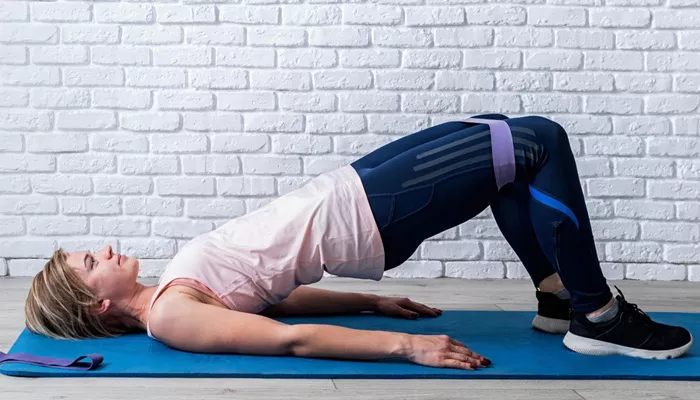Hip thrusts are a popular and highly effective exercise used primarily to target the glutes. This exercise has gained significant popularity among fitness enthusiasts and athletes due to its ability to enhance glute strength, muscle development, and overall lower body function. In this article, we will explore what hip thrusts are, how to perform them correctly, and their benefits. We will also discuss the importance of anaerobic exercise and how hip thrusts contribute to anaerobic training.
What are Hip Thrusts?
Hip thrusts are a lower body exercise primarily focused on the glute muscles. Unlike traditional squats and lunges, which engage multiple muscle groups, hip thrusts target the glutes with greater emphasis. The exercise involves sitting on the ground with your upper back resting against a bench while your feet are flat on the floor. By thrusting your hips upward, you activate your glutes, hamstrings, and core, making this movement a powerful tool for strengthening and toning the lower body.
Benefits of Hip Thrusts
There are several key benefits of incorporating hip thrusts into your workout routine:
- Glute Development: The primary benefit of hip thrusts is their ability to enhance glute strength and muscle development.
- Improved Posture: Strong glutes can contribute to better posture by supporting the pelvis and spine.
- Increased Athletic Performance: Athletes who perform explosive movements, such as jumping or sprinting, can benefit from stronger glutes.
- Core Engagement: The hip thrust engages the core muscles, helping to improve overall stability and strength.
How to Perform Hip Thrusts
Proper form is essential for maximizing the benefits of hip thrusts and avoiding injury. Follow these steps to perform the exercise correctly:
- Step 1: Sit on the floor with your upper back resting against a bench or elevated surface. Your feet should be flat on the ground, about hip-width apart.
- Step 2: Roll a barbell or place a weight plate over your hips for added resistance.
- Step 3: Drive through your heels and push your hips upwards, extending them fully at the top of the movement. Squeeze your glutes at the peak of the thrust.
- Step 4: Lower your hips back to the starting position in a controlled manner, and repeat for the desired number of reps.
Common Mistakes to Avoid
While performing hip thrusts, it’s crucial to avoid common mistakes that can hinder your progress and increase the risk of injury:
- Arching the Lower Back: Ensure that your lower back remains neutral during the movement. Avoid over-arching, as this can strain the lower back.
- Not Engaging the Core: Engage your core muscles throughout the exercise to maintain stability and protect your lower back.
- Incorrect Foot Placement: Your feet should be placed flat on the floor with your knees bent at about 90 degrees. Avoid placing your feet too far forward or backward.
Variations of Hip Thrusts
While the traditional hip thrust is effective, there are several variations you can try to add variety to your workouts:
- Single-Leg Hip Thrusts: This variation targets each leg individually, helping to correct muscle imbalances and improve unilateral strength.
- Banded Hip Thrusts: Adding a resistance band around your knees can help activate the glutes more effectively and increase the difficulty of the exercise.
- Machine Hip Thrusts: Some gyms have a hip thrust machine that can provide added stability and allow for more controlled movement.
How Hip Thrusts Contribute to Anaerobic Training
Hip thrusts are a form of anaerobic exercise, which is designed to build strength, power, and muscle mass without relying on prolonged cardiovascular endurance. Unlike aerobic exercises such as running or swimming, anaerobic exercises like hip thrusts involve short bursts of high-intensity activity, where the body relies on energy stored in the muscles rather than oxygen.
By incorporating hip thrusts into your anaerobic training routine, you can effectively enhance glute strength, muscle size, and overall lower body power. These benefits are crucial for athletes who rely on explosive movements, such as sprinters, football players, and basketball players. Additionally, strong glutes support better athletic performance by improving sprinting speed, jumping ability, and overall body control.
Integrating Hip Thrusts into Your Workout Routine
Hip thrusts can be a valuable addition to a well-rounded fitness routine. Here’s how you can incorporate them into your workouts:
- As a Main Exercise: Perform hip thrusts as the primary focus of your lower body workout. Do 3–4 sets of 8–12 reps, with a focus on progressively increasing the weight.
- As an Accessory Exercise: Include hip thrusts as an accessory movement after your main leg exercises, such as squats or deadlifts.
- During HIIT Workouts: Add hip thrusts to high-intensity interval training (HIIT) circuits for an effective full-body workout.
Combining Hip Thrusts with Other Exercises
To achieve a balanced and effective lower body workout, it’s essential to combine hip thrusts with other exercises that target different muscle groups. For example:
- Squats: Squats are excellent for overall lower body strength, while hip thrusts focus on glute activation.
- Deadlifts: Deadlifts engage the hamstrings and lower back, complementing the glute-focused work of hip thrusts.
- Lunges: Lunges can help improve balance and target the quads, hamstrings, and glutes.
Conclusion
Hip thrusts are a highly effective exercise for building glute strength and improving overall lower body function. Whether you are looking to enhance athletic performance or simply tone and strengthen your glutes, hip thrusts offer numerous benefits. By maintaining proper form and incorporating variations, you can make the most of this exercise and achieve your fitness goals. Furthermore, by including hip thrusts in your anaerobic training routine, you will improve strength, power, and muscle development. Remember to gradually increase the resistance as you progress to continue challenging your muscles and see lasting results.

